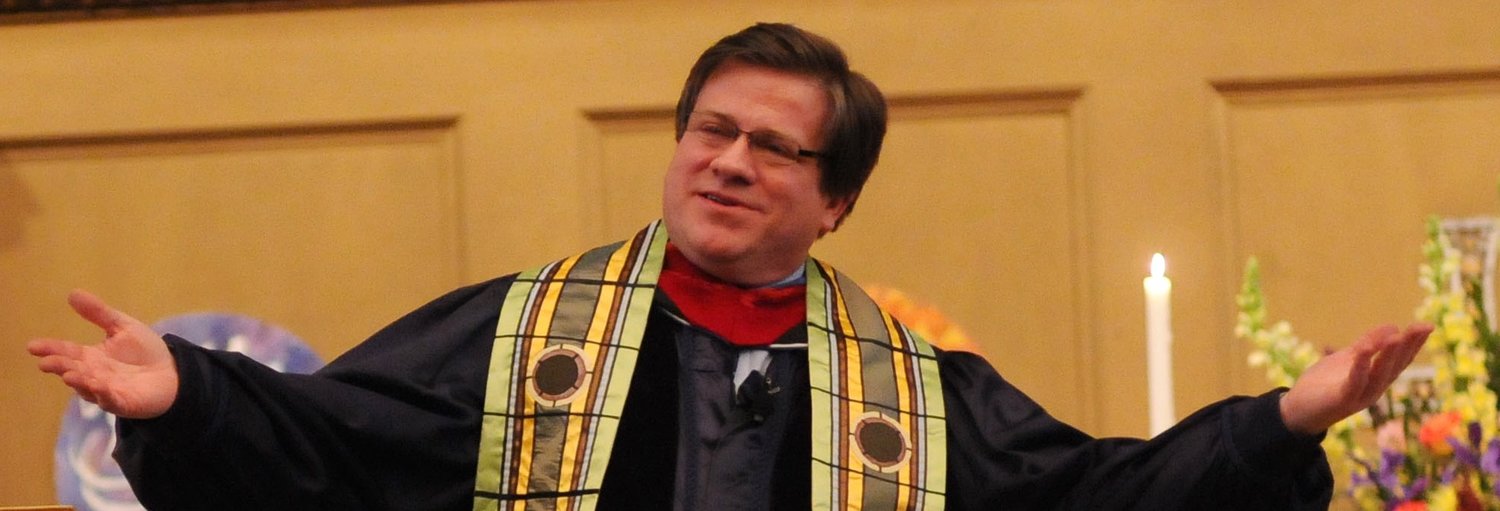Newsletter column
Dear congregation, dear community,
Our steeple is the aspirations of people.
Our altar is the common ground upon which all persons walk.
Our cross is the oppression from which any people seek to liberate themselves.
Our creed is the deeply held belief that community enhances individuality
and individuality, community.
—Rev. Dr. William S. Alberts
This affirmation comes from the Community Church of Boston, an historic congregation in our Unitarian Universalist movement. Not historic for its ancient tenure—it was founded in 1920 (just after our centennial!). But historic in that it was the first of our “forum” churches, places where the morning pulpit address was just the beginning of a conversation among the people assembled.
There’s a notion of community there. Clarence Russell Skinner, Universalist minister, later the Professor of Applied Christianity at the (Universalist) Theological School at Tufts University, still later that school’s Dean, developed the forum church model in Lowell, Massachusetts where he created a Sunday evening series where mill owners and managers and mill workers might sit in the same room and discuss meaningful topics. Moving the forum to a Sunday morning service, Skinner urged that a modern church might be fully formed not around speculations about a distant God, but about the real lives of the people gathered in community.
Our commitment to diversity in our church—displayed on the new banner about to be displayed on our Charles Street façade—is a commitment to the real people who sit in our pews. It is also to the people walking by (or wheeling by!) on the street. The community that we hope to include is not just those of us already arrived and committed. That community might easily devolve into a club, a group of cliques, or narrow interest groups. Our Universalist notion of community is an open-ended one—not unlike the beautiful banner inside our Sanctuary that shows a circle assembled holding hands, but with open spaces where new people might join the circle. “We are dancing Sarah’s circle” we sometimes sing, “on and on the circle’s moving, sisters, brothers, all.” The circle is open . . . and our community is open, too.
We pay attention to the real people of our community. This means knowing each other’s stories, understanding how someone came to be part of our community, learning what they are seeking in a religious community. We also need to be able to share what about the church meets our needs. We should be able to tell what word of hope, or joy, or comfort, or challenge spoke to the truth of our own lives? How did we respond to the invitation to become the community, and how does our presence let others know that we want to be part of building a loving community—with them?
Our deeply held belief is that our church is enhanced when we know more fully who we are as individuals. Julie Bell, at a recent Cottage Party, shared the observation of a Baltimore Sun writer: “In New York you become a New Yorker, . . . in Baltimore, you become yourself.” Being part of our community can be discovering more fully who you are, what you believe. We speculate less on distant gods (or abstract concepts) and pay attention more to the precious lives we encounter in this place. Our theory of community says that those individuality-discoveries are things that we can celebrate.
We’ll share much with each other this month! Our “Wheel of Life” service will be a place to state transitions in our lives. Our Annual Meeting will include a time to hear some of our stories and to name the direction we hope to go in the next years. Our community will make promises about our resources and elect new leadership. And I, for one, will believe Dr. Alberts’ creed: “community enhances individuality and individuality, community.” Blessed Be!
With love,
David Carl Olson
Rev. David Carl Olson, minister
